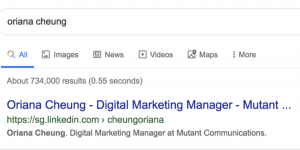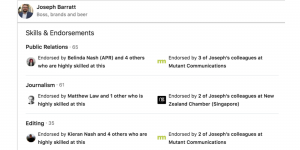Rebranding is merely about getting a new logo and a new website. Or is it?
Let’s say you’re starting a new business. Your new business needs a face and identity – a basic kit of deliverables that define what your business looks like. These usually consist of a logo, business cards, letterhead, a website. But where do you find them?
Others who have pondered this question and taken to the internet to find answers have likely bought their “branding kit” off a stock image site, or hired a freelance graphic designer. Much to the horror of designers, some have resorted to the infamous Microsoft Paint, or worse, Comic Sans!
Lo and behold, branding problems: solved! Time to focus on the real business.
Or so you thought.
It’s not uncommon for companies to “rebrand”, even if they have gotten their branding right from the very start.
Here’s the truth: changing your logo or using a different colour for your website is merely makeup – it doesn’t do much for your brand on a deeper level. Branding involves more than just switching up your aesthetics: it includes how you interact with your audiences. Before you consider any course of action, here’s an important question you need to ask yourself : what, exactly, is branding?
To understand branding, we must understand what exactly a brand is. Here is a quote from branding expert, Marty Neumeier:
“A brand is a person’s gut feeling about a product, service or company…In other words, a brand is not what YOU say it is. It’s what THEY say it is.”
Branding is the marriage of business strategy and creativity, a process which transcends the superficial. When you know what your company stands for, its core values, and what it has to offer, you have on your hand, a strong brand. Zero in upon this before externalising them as logos, websites, or other materials.
Many companies often look to agencies for their expertise in creating or revamping a brand. A good agency will do a full, thorough audit of your company before making any suggestions, aesthetic or otherwise. Established, charismatic brands do not do makeovers unless their business changes dramatically. After all, branding should be iconic enough to stand the test of time.
Answer these three fundamental questions before deciding to build your brand, or do a complete rebrand:
- Who are my customers?
Like a regular health check up, this foundational question is worth revisiting every once in a while. Discover more about who your customers really are – their hopes, dreams, and motivations. Learn more about them, and you will learn much about your brand in the process
- Who should be my customers?
“Everyone”is not the right answer. Your brand and products cannot please everyone – frankly, trying to do so is futile and nothing but a waste of your precious time and resources. Zero in on a primary target audience, and work hard to attract and retain them into being long-term customers. Who is your dream client and what do they look like? If you can find out more about their interests, motivations and propensity to purchase, you will be able to reach them faster.
- What makes me unique?
Distinguishing yourself from your competitiors could either be as easy as examining what’s already working for your brand, or as difficult as finding a needle in a haystack. Branding experts will deconstruct your brand, stripping it down to its bare essentials until nothing remains but the truth about itself. From there, your agency will work with you to create a brand that sets you apart from the competition and appeals to your target audience.
Rebranding can be a challenging process, but when done right it will align what you have to offer with your customers’ desires.
Aesthetically-pleasing design is a valuable tool, but can only do so much to enhance your brand, which must be built upon a solid strategy. Despite being a challenging experience, rebranding will help align your company’s offerings to your customers desires.
Ready to win over new customers? Write to us at at hello@mutant.com.sg!







